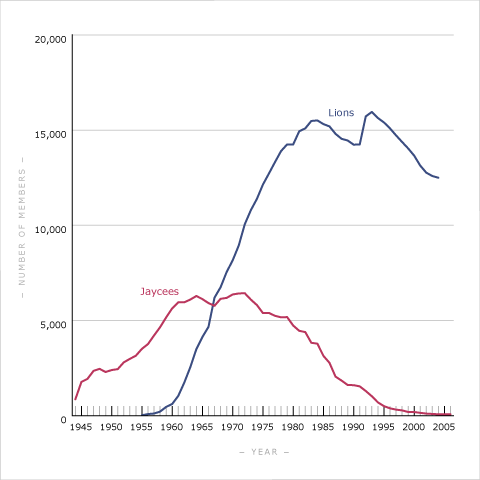
Service clubs grew fast in New Zealand in the 30 years after the Second World War, and were particularly associated with the growth of the suburbs. However from the 1980s, as increasing numbers of middle-class women entered the workforce, there was growing resistance to men spending their spare time on male-exclusive activities. The cities offered increasing opportunities for other forms of recreation attractive to mixed groups, and membership of Lions and Jaycees fell. The decline was particularly marked among the Jaycees, who had an upper age restriction of 40 years. As members reached that age, many Jaycees' clubs closed, and in 2011 there were fewer than 100 members nationwide.
Te whakamahi i tēnei tūemi
Te Ara - The Encyclopedia of New Zealand
This item has been provided for private study purposes (such as school projects, family and local history research) and any published reproduction (print or electronic) may infringe copyright law. It is the responsibility of the user of any material to obtain clearance from the copyright holder.
Source: Vince Boyle, Golden service!: a history of 50 years of Lions in New Zealand and the South Pacific. Wellington: Lions International, 2004; Graham and Susan Butterworth, Jaycee: developers of people, builders of communities. Wellington: Ngaio Press, 2007, pp. 247–248.






Tāpiritia te tākupu hou